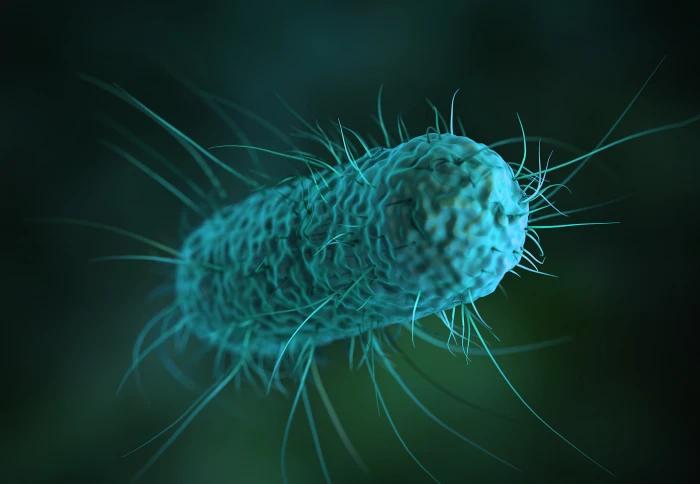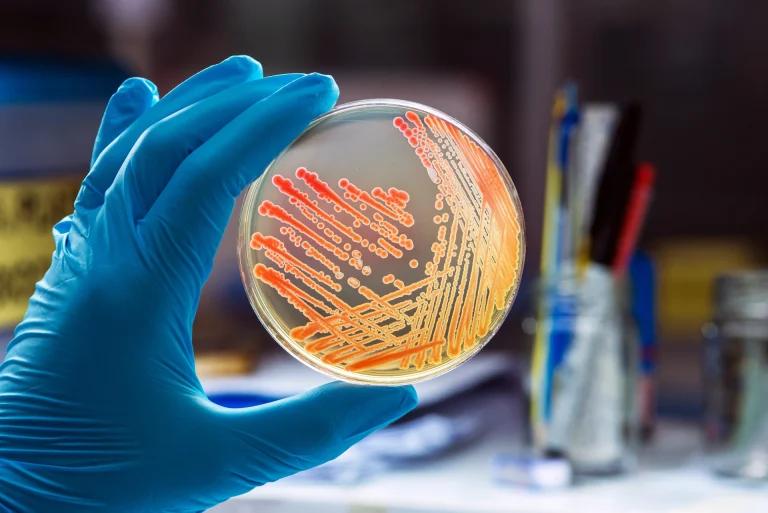E. coli, short for Escherichia coli, is a group of bacteria commonly found in the lower intestine of warm-blooded organisms, including humans. While most E. coli strains are harmless and even beneficial, some can cause severe foodborne illnesses and pose a significant public health concern. A question that often arises is whether E. coli infections are contagious and how they can be transmitted from person to person.
In this blog, we will try and explore the contagious nature of E. coli, look at the various strains and their potential to cause illness, understand the routes of transmission, and uncover effective prevention strategies to safeguard individuals and the wider community.
Understanding E. coli
E. coli is a diverse group of bacteria that inhabit the gastrointestinal tract of humans and animals. The majority of strains of E.coli are harmless and even play a beneficial role in the digestive process. However, a few strains, such as Shiga toxin-producing E. coli (STEC), can produce potent toxins that can lead to severe foodborne diseases.
Types of E. coli infections
E. coli infections can manifest in various forms, depending on the specific strain involved and the affected body part. Some of the common symptoms include:
- Gastrointestinal infections: Characterised by watery diarrhea, abdominal cramps, and sometimes bloody stools
- Urinary tract infections (UTIs): E. coli can invade the urinary tract, causing pain, burning sensations during urination, and frequent urination
- Bloodstream infections: In rare cases, E. coli can enter the bloodstream, leading to a life-threatening condition called sepsis
- Other infections: E. coli can also cause infections in the prostate, gallbladder, and even the meninges (the membranes surrounding the brain and spinal cord)
Shiga toxin-producing E. coli (STEC)
Among the various E. coli strains, Shiga toxin-producing E. coli (STEC) is of particular concern due to its ability to cause severe illness. STEC, including the well-known subtype E. coli O157:H7, can release a potent toxin that damages the lining of the small intestine, leading to bloody diarrhea and potentially life-threatening complications like hemolytic uremic syndrome (HUS).
Is E. coli contagious?
The short answer is yes, E. coli can be contagious and can spread from person to person. The primary mode of transmission is through the faecal-oral route, where the bacteria from infected individuals or contaminated surfaces make their way into the mouths of healthy individuals.
Transmission routes
E. coli can be transmitted through various pathways, including:
- Contaminated water and food: Consuming undercooked meat, unpasteurised dairy products, or contaminated produce can lead to E. coli infections
- Person-to-person contact: Improper hand hygiene, especially after using the restroom or changing diapers, can allow the bacteria to spread from an infected individual to others
- Environmental exposure: Contact with farm animals, petting zoos, or drinking water from recreational water sources (such as swimming pools or lakes) contaminated with E. coli can also result in transmission
- Cross-contamination during food preparation: Failing to properly clean and sanitise surfaces, utensils, and hands can lead to the spread of E. coli from raw to cooked foods
Risk factors for E. coli transmission
Certain individuals and groups are at a higher risk of contracting E. coli infections and experiencing more severe symptoms. These include:
- Young children and older adults: Developing immune systems in children or weakened immune systems in the elderly can make them more susceptible to E. coli-related illnesses
- People with compromised immune systems: Individuals with conditions like HIV/AIDS, cancer, or those taking immunosuppressive medications are at an increased risk
- Travellers to regions with poor sanitation: Exposure to contaminated food or water in certain parts of the world can lead to traveler’s diarrhea caused by E. coli
Symptoms of an E. coli infection
The symptoms of E. coli infections can range from mild to severe, depending on the specific strain and the individual’s health status.
Gastrointestinal symptoms
The most common symptoms associated with E. coli infections include:
- Watery diarrhea
- Abdominal pain and cramps
- Nausea and vomiting
- Low-grade fever
In more severe cases, the diarrhea may become bloody, indicating a potential STEC infection.
Complications
While most E. coli infections are self-limiting and resolve within a week, some individuals may develop more severe complications, such as:
- Hemolytic uremic syndrome (HUS): A life-threatening condition characterised by kidney failure, anaemia, and neurological complications, primarily affecting young children
- Thrombotic thrombocytopenic purpura (TTP): A rare disorder that can occur in adults, leading to blood clots and organ damage
- Reactive arthritis: In some cases, E. coli infections can trigger an autoimmune response, causing joint inflammation and pain
Prompt medical attention is crucial for individuals experiencing severe symptoms or those belonging to high-risk groups, to prevent the development of these potentially devastating complications.
Diagnosis and testing
Diagnosing an E. coli infection typically involves a combination of clinical symptoms and laboratory tests.
Clinical evaluation
Healthcare providers will typically start by conducting a thorough medical history and physical examination, focusing on the patient’s symptoms, recent travel or dietary history, and potential exposure to contaminated sources.
Laboratory tests
To confirm the presence of E. coli, healthcare providers may order the following tests:
- Stool culture: A sample of the patient’s stool is collected and tested for the presence of E. coli bacteria
- Polymerase chain reaction (PCR) testing: This molecular-based test can rapidly identify the specific E. coli strain, including STEC
- Serological testing: Blood tests may be used to detect the presence of E. coli-specific antibodies, indicating a recent or ongoing infection
In some cases, additional tests, such as urine cultures or blood cultures, may be necessary to diagnose E. coli infections in other parts of the body.
Treatment and management
The approach to treating E. coli infections depends on the severity of the symptoms and the specific strain involved.
Mild gastrointestinal infections
For mild cases of E. coli-related gastroenteritis, the primary treatment is supportive care, which includes:
- Maintaining plenty of fluids through oral rehydration or intravenous fluids
- Avoiding anti-diarrheal medications, as they can potentially worsen the condition
- Monitoring for signs of dehydration or progression to more severe illness
Severe or complicated infections
In cases of severe E. coli infections, particularly those involving STEC or complications like HUS, the treatment may include:
- Hospitalisation for close monitoring and supportive care
- Antibiotics (in some cases, but with caution as they may increase the risk of complications)
- Dialysis for individuals with kidney failure
- Blood transfusions to address anaemia
- Medications to manage neurological complications or blood clotting issues
The use of antibiotics in STEC infections remains controversial, as they may potentially increase the risk of developing HUS.
Prevention strategies
Preventing E. coli infections is crucial, particularly for vulnerable people. Here are some effective prevention strategies:
Food safety practices
- Cook meat, poultry, and eggs thoroughly to the recommended safe internal temperatures
- Avoid consuming unpasteurized dairy products, juices, or cider
- Wash fruits and vegetables thoroughly before consumption, especially if they will be eaten raw
- Separate raw and cooked foods during preparation to prevent cross-contamination. This includes using separate cutting boards
- Maintain good hygiene in the kitchen, including frequent handwashing and cleaning of surfaces and utensils
Personal hygiene
- Wash hands thoroughly with soap and water, especially after using the restroom, changing diapers, or after contact with animals
- Encourage proper handwashing practices, especially in childcare settings and among food handlers
- Avoid touching the face, especially the mouth, with unwashed hands
Environmental precautions
- Ensure proper sanitation and disinfection of water sources, including private wells and recreational water bodies
- Limit contact with farm animals, petting zoos, and other environments where E. coli may be present
- Educate the public, especially high-risk groups, about the importance of safe food handling and personal hygiene to prevent E. coli transmission
By implementing these prevention strategies, individuals and communities can significantly reduce the risk of contracting and spreading E. coli infections.
Conclusion
E. coli can pose a significant threat to human health when certain strains, such as Shiga toxin-producing E. coli (STEC), cause severe foodborne illnesses. By embracing a comprehensive approach that combines food safety practices, personal hygiene, environmental precautions, and ongoing research and surveillance, we can reduce the risk of E. coli infections and protect ourselves from the devastating consequences of these bacterial outbreaks.
Sources
Medical Disclaimer
NowPatient has taken all reasonable steps to ensure that all material is factually accurate, complete, and current. However, the knowledge and experience of a qualified healthcare professional should always be sought after instead of using the information on this page. Before taking any drug, you should always speak to your doctor or another qualified healthcare provider.
The information provided here about medications is subject to change and is not meant to include all uses, precautions, warnings, directions, drug interactions, allergic reactions, or negative effects. The absence of warnings or other information for a particular medication does not imply that the medication or medication combination is appropriate for all patients or for all possible purposes.









